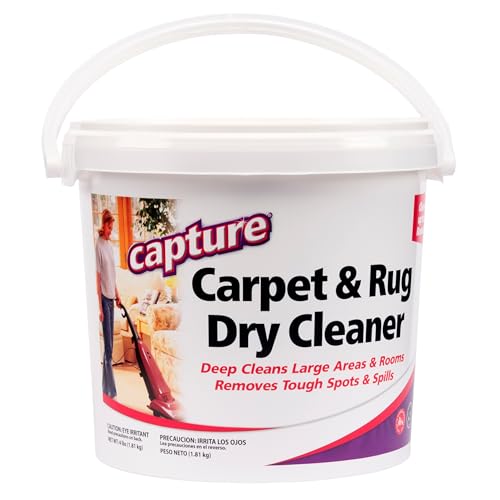Causes of New Carpet Smells
When you bring home a brand new carpet, you expect it to have that fresh, clean scent. But sometimes, you may notice an unpleasant odor that resembles cat pee. Don’t fret, as there are several reasons why your new carpet might emit such a smell.
- Chemicals in the Carpet: Carpets are often treated with various chemicals during the manufacturing process. These chemicals can emit volatile organic compounds (VOCs), which can give off odors that resemble cat urine. Common chemicals include formaldehyde, which is used in adhesives and fiber treatments, as well as styrene, which is found in synthetic fibers.
- Microbial Growth: If you’ve ever experienced a cat peeing on your old carpet, the urine can soak into the padding and subfloor, leading to the growth of bacteria and mold. When you replace the carpet, these microorganisms can still be present, causing the new carpet to emit a similar odor. It’s important to thoroughly clean and treat the subfloor before installing new carpet.
- Poor Ventilation: Proper airflow is essential to minimize lingering odors during and after carpet installation. If the area is not adequately ventilated, the new carpet smell can become more noticeable and may resemble cat urine. Opening windows and using fans can help circulate fresh air and reduce the odor.
- Residual Odors: Sometimes, the new carpet smell can interact with other odors in your home, such as the scent of cleaning products, pets, or even cooking. These odors can mix and create a smell similar to cat urine. Regular cleaning and maintaining good indoor air quality can help minimize these residual odors.
It’s important to note that not all new carpets will have a cat pee-like smell. If you’re concerned about the odor, contact the retailer or manufacturer for further assistance. They can provide guidance on how to address the issue and help determine if the smell is a cause for concern.
Remember, with proper maintenance and care, your new carpet can provide comfort, style, and a fresh atmosphere for years to come without any lingering odors.
Understanding the Cat Pee Odor
If you’re a cat lover like yourself, you know that there’s nothing worse than the smell of cat pee in your home. But what if that smell isn’t actually coming from your beloved feline friend? New carpet smells that resemble cat urine can be a real nuisance, and it’s important to understand why this might happen.
Chemicals in the manufacturing process: When carpets are made, they may go through a process that involves the use of certain chemicals. These chemicals can sometimes produce an odor that is similar to cat pee. It’s not your cat’s fault at all!
Microbial growth from previous incidents: In some cases, the smell of cat pee might be a result of past incidents. If there was a previous incident of cat urine on the flooring, it’s possible that microbial growth occurred. Even if the subfloor is cleaned, there might be lingering odors that can seep into new carpet fibers.
Poor ventilation during and after installation: Another factor that can contribute to the cat pee smell is poor ventilation during and after carpet installation. If there isn’t enough airflow, any odors present in the carpet can become trapped, leading to an unpleasant smell.
Interaction with other odors: Sometimes, the new carpet smell can interact with other odors in your home, creating a scent that resembles cat pee. This can happen if there are other strong odors, such as pet odors or cleaning products, present in your living space.
To tackle the cat pee odor issue, it’s important to take some steps to mitigate the problem. This includes:
- Ensure proper cleaning of the subfloor before installing new carpet.
- Opt for carpets made with low-VOC (volatile organic compound) materials that emit fewer harsh odors.
- Increase ventilation during and after the carpet installation process to allow odors to dissipate.
- When dealing with lingering odors, consider using odor absorbers or air purifiers to help freshen up the space.
- If the smell persists despite your best efforts, it’s a good idea to reach out to the retailer or manufacturer for further assistance.
Confirming the Source of the Smell
If you’re a cat lover like yourself, the last thing you want is for your new carpet to smell like cat pee. It can be a bit puzzling and frustrating, especially if you don’t have any cats or if your furry friends are well-behaved.
To confirm the source of the smell, you need to do a little detective work. Here are a few steps you can take:
- Rule out any lingering odors from previous incidents: If there has been a previous cat urine incident in your home, it’s possible that the smell has seeped into the subfloor or padding beneath your new carpet. Take a closer look at these areas to see if they need cleaning or treatment.
- Check the chemicals used in the manufacturing process: Some carpets are treated with chemicals that can emit an odor when they are first installed. These odors can sometimes resemble cat urine. Check with the manufacturer or retailer to find out if any specific chemicals were used in the production of your carpet.
- Inspect your ventilation: Poor ventilation during and after carpet installation can cause odors to linger. Make sure that the area is well-ventilated during installation and keep windows open, or use fans to promote airflow after installation.
- Consider other possible sources of odor: Odors from pets, cooking, or other household activities can interact with the new carpet smell, creating a scent that resembles cat urine. Make sure to eliminate or address any other potential sources of odor in your home.
Taking the time to confirm the source of the smell will help you tackle the issue more effectively. Keep in mind that some carpet odors may dissipate over time as the materials off-gas. However, if the smell persists and becomes unbearable, it may be necessary to reach out to the retailer or manufacturer for further assistance.
Remember, as a cat lover, you want your home to be a comfortable and inviting space for both you and your furry friends.
Solutions for Eliminating Cat Pee Smell
So, your new carpet smells like cat pee and you’re looking for solutions to get rid of that unpleasant odor. As a fellow cat lover, enthusiast, and expert, I’m here to help you navigate through this situation. Let’s dive right in:
- Identify the affected area: Start by locating the specific areas of your carpet that have been tainted by the cat pee smell. Lift up any loose edges or corners of the carpet to inspect underneath, as the odor might have seeped through to the padding beneath.
- Blot the stain: If you find any visible stains or wet areas, gently blot them with a clean cloth or paper towel. Avoid rubbing or scrubbing the stain, as it can spread the odor further and damage the carpet.
- Use a specialized pet odor neutralizer: Look for a pet-specific carpet cleaner or odor neutralizer that is designed to tackle pet urine smells. These products contain enzymes that break down the odor-causing compounds and help eliminate the smell. Follow the instructions provided on the product carefully.
- Try natural remedies: If you prefer a more natural approach, you can try using vinegar or baking soda to combat the cat pee smell. Vinegar can help neutralize the odor, while baking soda can absorb the smell. Mix a solution of water and vinegar (1:1 ratio) and spray it onto the affected area. Let it sit for a few minutes before blotting it dry. Alternatively, sprinkle baking soda over the area, let it sit overnight, and vacuum it up the next day.
- Professional carpet cleaning: If the cat pee smell persists despite your best efforts, consider hiring a professional carpet cleaning service. They have specialized equipment and solutions that can deep clean your carpet and effectively remove the odor.
Remember, it’s important to address the cat pee smell as soon as possible to prevent it from lingering and becoming more difficult to eliminate. By following these solutions, you’ll be well on your way to enjoying a fresh-smelling carpet once again.
Stay tuned for more tips and tricks on how to deal with common cat-related issues without any concluding paragraph or sentence.
Preventive Measures to Avoid Smelly Carpets
As a cat lover, you want to make sure that your new carpet remains fresh and odor-free. Here are some preventive measures you can take to avoid the unpleasant smell of cat pee lingering in your home.
- Proper litter box placement: Ensure that your cat’s litter box is placed in a convenient location that your cat can easily access. It’s essential to have multiple litter boxes if you have more than one cat.
- Regular cleaning: Scoop and clean the litter box regularly to prevent any accidents or lingering odors. Cats are clean animals, and a dirty litter box might force them to find alternative spots to relieve themselves.
- Stress reduction: Cats can sometimes exhibit inappropriate urination behavior if they are stressed. Providing a calm and comfortable environment for your cat can help reduce anxiety and the likelihood of accidents.
- Proper training: Ensure that your cat is trained to use the litter box. If you’re unsure about how to go about litter training, seek advice from a cat behavior expert or a veterinarian.
- Odor-neutralizing products: Use odor-neutralizing sprays or powders specifically designed for pet-related odors. These products can help eliminate any lingering smells and keep your carpets fresh.
- Monitoring and prompt clean-up: Keep an eye out for any accidents or spills and clean them up immediately. The longer the urine sits on the carpet, the more challenging it will be to remove the odor.
- Regular carpet cleaning: Schedule regular professional carpet cleaning to ensure deep cleaning and odor removal. Carpet cleaning experts can use specialized equipment and treatments to effectively eliminate any pet-related odors.
By following these preventive measures, you can minimize the chances of your new carpet smelling like cat pee. Remember, addressing the issue promptly is essential.
Conclusion
Now you have all the tools you need to tackle that pesky cat pee smell in your new carpet. By following the steps outlined in this article, you can effectively eliminate the odor and prevent it from coming back.
Remember to start by identifying the affected areas and blotting any visible stains. Then, use a specialized pet odor neutralizer or try natural remedies like vinegar or baking soda. If the smell persists, don’t hesitate to call in the professionals for a thorough carpet cleaning.
In addition to these solutions, it’s important to take preventive measures to avoid smelly carpets in the first place. Proper litter box placement, regular cleaning, stress reduction, and proper training can all contribute to a fresh-smelling home. And don’t forget to use odor-neutralizing products to keep your carpet smelling clean and fresh.
By implementing these tips and tricks, you can ensure that your new carpet stays odor-free and enjoyable for years to come. Happy cleaning!
Frequently Asked Questions
Q: How can I eliminate cat pee smell from new carpets?
A: Start by identifying the affected areas and blotting any visible stains. Then, use a specialized pet odor neutralizer or try natural remedies such as vinegar or baking soda. If the smell persists, consider professional carpet cleaning.
Q: What preventive measures can I take to avoid smelly carpets?
A: Proper litter box placement, regular cleaning, stress reduction, proper training, and using odor-neutralizing products can help prevent smelly carpets. Monitoring and prompt clean-up, as well as scheduling regular professional carpet cleaning, are also important to minimize the chances of the new carpet smelling like cat pee.

















